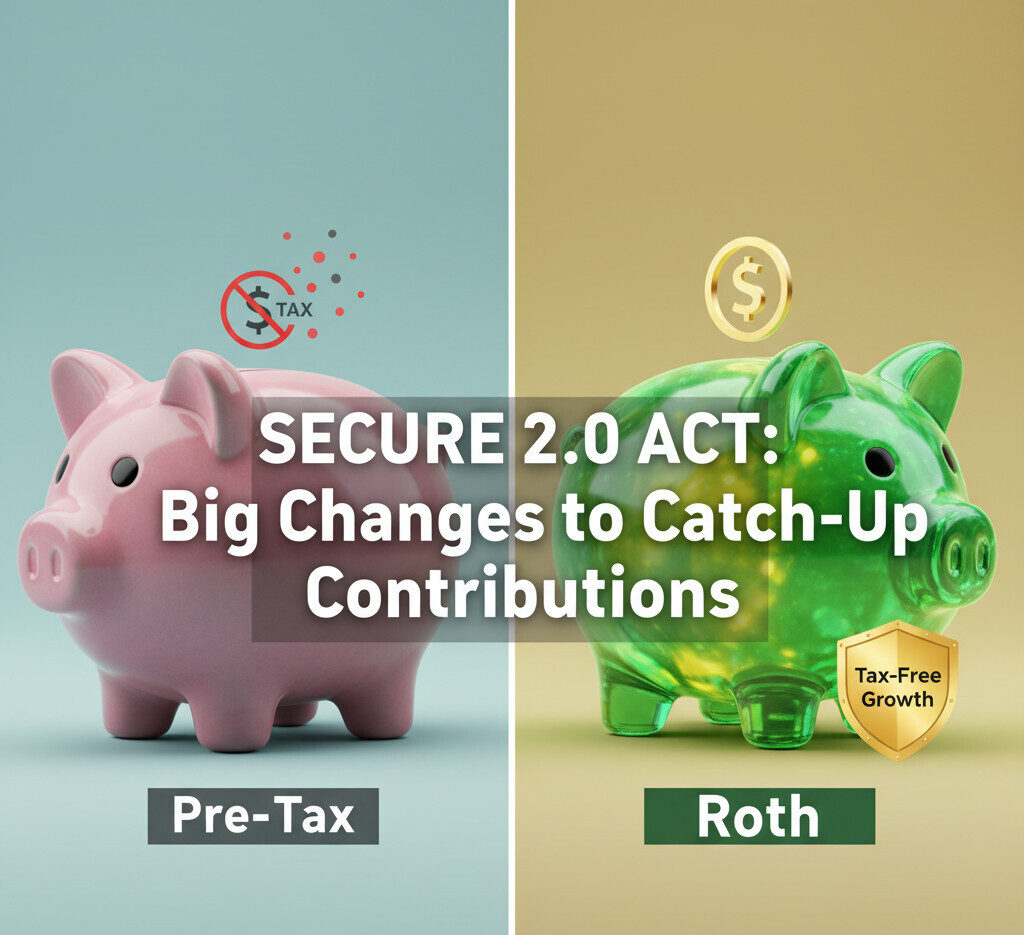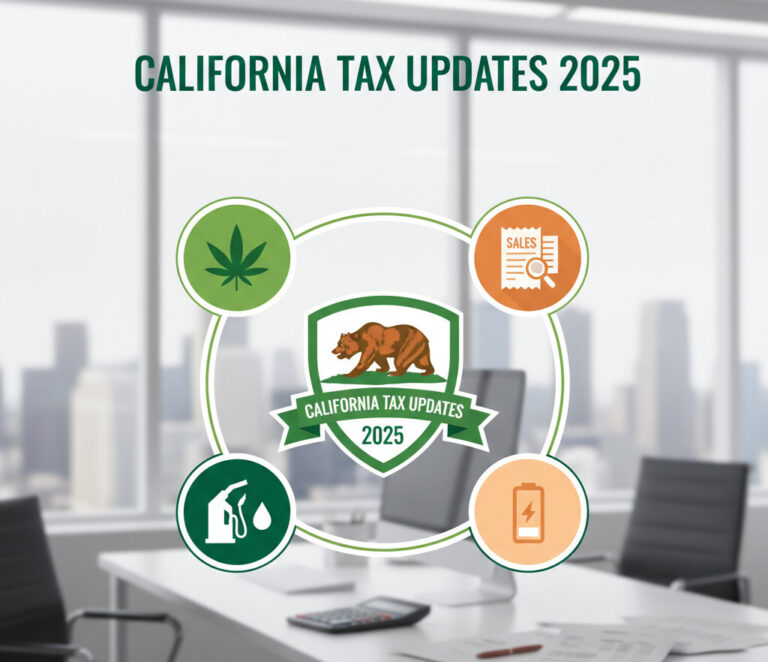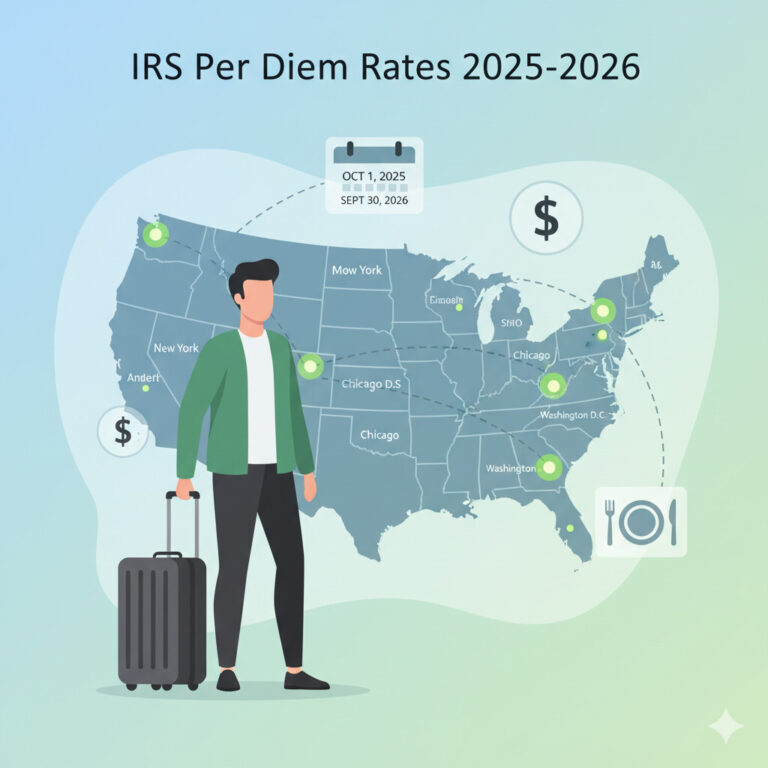SECURE 2.0 Roth Catch-Up Contributions: Final Rule from IRS
Are you diligently saving for retirement and looking forward to making those extra “catch-up” contributions once you hit 50? It’s a fantastic strategy to boost your nest egg. But, just when you think you have the rules figured out, things change. I was recently reviewing the latest retirement regulations and came across a significant update in the SECURE 2.0 Act that many people might miss. It specifically targets high-income earners, and if that’s you, your contribution strategy might need a little tweak. Don’t worry, I’ll break it all down for you! 😊
First, What Are Catch-Up Contributions? 🤔
Let’s start with a quick refresher. Life happens, and sometimes we can’t save as much for retirement in our earlier years as we’d like. To help people supercharge their savings as they get closer to retirement, the government allows those aged 50 and over to contribute more to their retirement accounts than the standard annual limit. These extra amounts are called “catch-up contributions.”
For example, in 2024, the standard employee contribution limit for a 401(k) is $23,000. If you are 50 or older, you can contribute an additional $7,500 as a catch-up contribution, bringing your total possible contribution to $30,500. Traditionally, you could make these contributions on a pre-tax basis, lowering your taxable income for the year.
Catch-up contributions are a powerful tool designed to help you significantly increase your retirement savings in the decade or so before you plan to retire. It’s a key strategy for anyone feeling a little behind on their goals.
The Big Change: The SECURE 2.0 Act Roth Rule 📜
This is where things get interesting. Section 603 of the SECURE 2.0 Act introduces a new rule for high-income earners. If your prior-year wages from your employer were more than $145,000, any catch-up contributions you make must be designated as Roth contributions.
What does this mean? A Roth contribution is made with post-tax dollars. You don’t get an immediate tax deduction in the year you make the contribution. However, the huge advantage is that your contributions and, more importantly, all their earnings, can be withdrawn completely tax-free in retirement (assuming you meet the qualifications).
This rule was originally set to take effect on January 1, 2024. However, the IRS announced a two-year administrative transition period, delaying the implementation. The new mandatory Roth catch-up rule will now officially begin on January 1, 2026. This gives employers and plan administrators more time to prepare for the change.
Who Is Affected and How? A Comparison 📊
This change doesn’t impact everyone. It’s specifically for employees who are age 50 or over and whose wages exceeded the $145,000 threshold in the previous calendar year. It’s important to note that this income threshold will be indexed for inflation in the future.
Let’s look at a clear comparison of the old rules versus the new rules effective in 2026.
Catch-Up Contribution Rules: Pre-2026 vs. Post-2026
| Feature | Rule Before 2026 | Rule Starting in 2026 |
|---|---|---|
| Eligibility Age | Age 50+ | Age 50+ (No change) |
| Wages ≤ $145,000 | Can choose Pre-Tax or Roth (if plan allows) | Can choose Pre-Tax or Roth (if plan allows) |
| Wages > $145,000 | Can choose Pre-Tax or Roth (if plan allows) | Must be Roth contributions |
| Immediate Tax Impact (for high earners) | Tax deduction if made Pre-Tax | No tax deduction (post-tax dollars) |
| Tax on Withdrawal in Retirement | Taxable as ordinary income (if pre-tax) | Completely tax-free (for Roth portion) |
What Does This Mean for Your Retirement Strategy? 👩💼👨💻
If you’re a high-earner, this mandatory shift to Roth for catch-up contributions has a few implications for your financial planning.
- Less Upfront Tax Savings: The most immediate impact is that you will no longer get a tax deduction on your catch-up contributions. This means your taxable income for the year will be slightly higher than it would have been under the old rules.
- More Tax-Free Income in Retirement: This is the big win. While you pay taxes now, you are essentially “pre-paying” the taxes on that money. Your future self will thank you when you can withdraw that entire chunk of cash—and all of its investment growth—without paying a dime to the IRS.
- Tax Diversification: Many financial advisors recommend having a mix of taxable, tax-deferred (like traditional 401k), and tax-free (like Roth) accounts in retirement. This rule automatically builds tax diversification into your plan, giving you more flexibility to manage your tax bracket in your golden years.
For this rule to apply, your employer’s retirement plan must permit Roth contributions. If your plan does not currently have a Roth option, the SECURE 2.0 Act implies that no one in the plan will be able to make catch-up contributions. It is widely expected that most plans will add a Roth feature to comply.
Key Takeaways of the Post 📝
Feeling a bit overwhelmed? Let’s quickly recap the most important points from this article.
- The New Rule: Starting January 1, 2026, employees with prior-year wages over $145,000 must make their age 50+ catch-up contributions to a Roth account.
- The Impact: This means you’ll pay taxes on those contributions now but will enjoy tax-free withdrawals of that money and its earnings in retirement.
- Who’s Affected: This only applies to individuals who are age 50 or over AND earned more than $145,000 in the previous year from their current employer.
- Action Item: Check if your company’s retirement plan has a Roth 401(k) option. If not, ask your HR or benefits department if they plan on adding one before the 2026 deadline.
SECURE 2.0 Roth Catch-Up Rule
Frequently Asked Questions ❓
Navigating retirement rules can feel like a full-time job, but staying informed is the best way to keep your financial future on track. Hopefully, this clears up the new Roth catch-up rule! What are your thoughts on this change? Let me know in the comments! 😊







